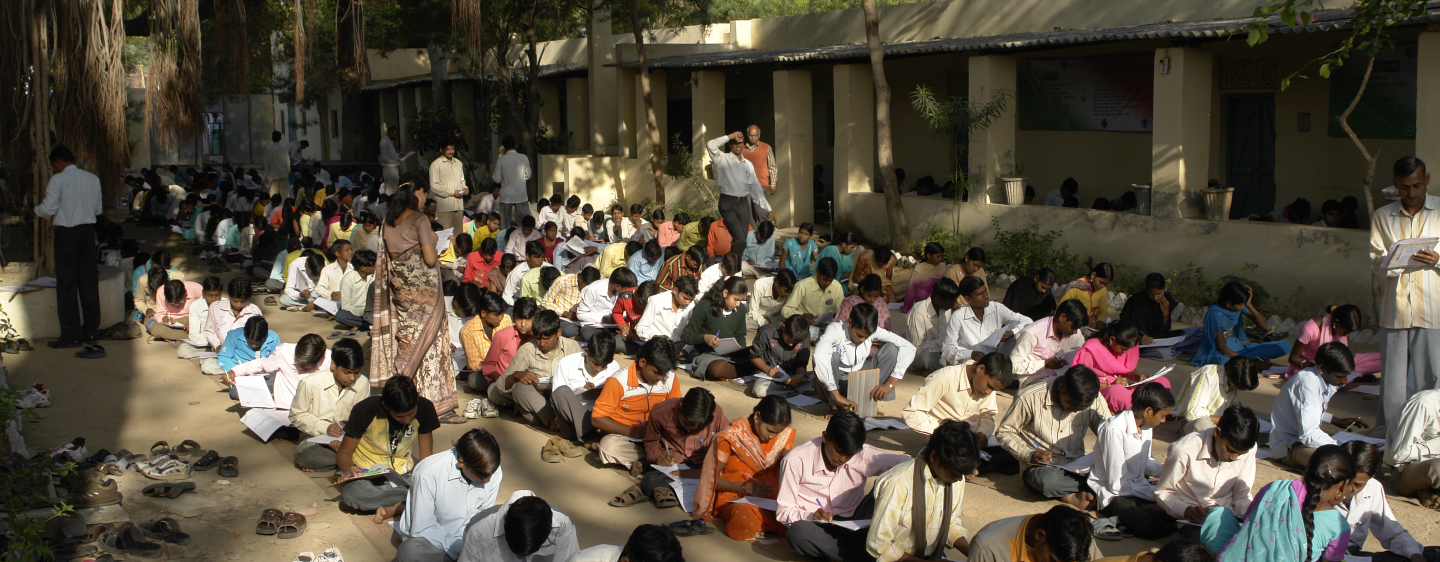The public education system in India fails to provide millions of students with a decent quality education and hampers their prospects of a better future.
The public education system in India fails to provide millions of students with a decent quality education and hampers their prospects of a better future. Even after seven decades of independence, it remains in dismal conditions. Politicians in India have only given lip service to education, no leader or party has tried to improve the deteriorating conditions of the public schools in India.
As per a UNESCO report in 2016, six million children in India between the ages of 6 and 13 remain out of the education system while 47 million drop-out of school by 10th standard. According the Annual Status of Education Report of 2016, 47.8% of students in Class V cannot read Class II level of text. Further, only 32 percent of students in Class III can read simple English words and only one in every four students in Class V could read a simple English sentence.
To solve the issues prevailing in the education system in India, the Central government enacted the Right to Education Act (RTE) 2009. The Act aims to provide free and compulsory education to all the children between the age of 6 and 14 years. Among other requirements, the Act obliges all private schools to reserve 25 percent seats for underprivileged children. However, the many loopholes in the law failed to achieve its intended objectives.
The RTE Act defines certain norms and measures for schools in the terms of school organization, pupils-teachers ratio, teacher characteristic and physical infrastructure of schools. If any school does not fulfill these norms prescribed by RTE, it is not allowed to function as per the Section 18 and 19 of the Act. This has a negative impact on the functioning of private schools across the country, particularly the low-budget private schools that cater to the needs of a large section of poor and middle-class Indians.
The low-budget private schools give an alternative to parents who could send their children to government schools for free. These schools charge fees anywhere between ₹200 – 600 per month which is easily affordable for many. About 35 percent of children in India attend private schools instead of choosing the government school for free.
The infrastructure norms prescribed by RTE includes schools to compulsory have a playground and material for games provided to children. In case of school running up to Class V, they should have at least 1800 square feet of land. A school running up to Class VIII must have at least 7200 square feet of land. In addition, the Act mandates Schools to have one classroom for each teacher and office-cum store for the head teacher. They must also have a kitchen where the mid-day meal is cooked and a library with a specific number of books. The salaries of teachers are also mandated to be based on the 6th Pay Commission.
These are just a few of the requirements. Many low-budget private schools cannot afford to pay such high salaries and follow such regulations, particularly within cities, where land is scarce. This has led to the shutdown of many low-budget private schools.
According to a study conducted by Centre for Civil Society a New Delhi based think-tank, 7,000 low budget schools in Maharashtra, 1,300 in Punjab, 786 in Karnataka and 1,200 in New Delhi have shut down due to strict norms of RTE Act. The Act is pushing children out of the education system instead of making things better for them. Their only other alternative is to attend a government school, where the quality of education is highly questionable.
The ‘No-Fail Policy’ under Section 16 of the RTE Act, is again a loophole which means the students will be automatically promoted to the next class. This has led to deteriorating learning levels and deficient performance of students in class. The No-Fail Policy creates no incentive for teachers to improve their teaching ability and no incentive for students to study harder. Even as the ruling government heavily criticised the implementation of the Act by UPA II administration in 2009. It has done nothing to improve the law.
Instead of focusing on the inputs such as school infrastructure and salaries and appointment of teachers, the law must focus learning outcomes and the quality of education provided to the students. The private schools should be free from all government intervention and licensing requirements and should openly compete for students. The parents and students need the choice of schools and accountability for high-quality education.
The best option for providing educational services to the poor and needy would be for the government to give them a voucher. These vouchers could be redeemed to pay the fee of any school the parents decide to send their children to. In this way, the schools would have to give the best quality of education at the least cost. If not, the parents will start sending their children to a different school.

